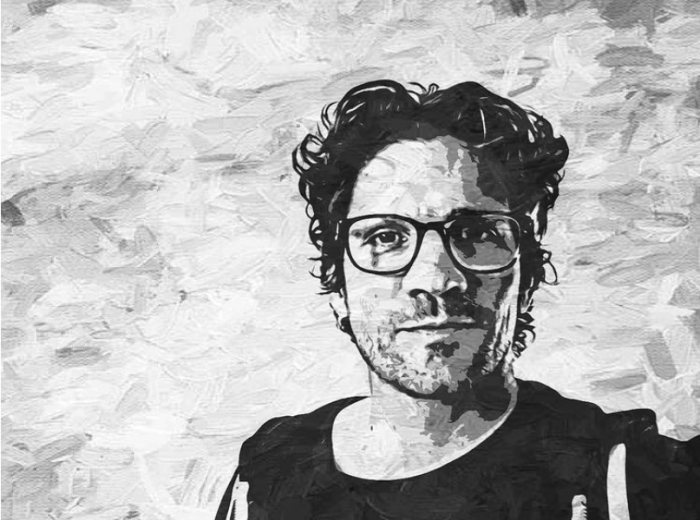I’ve been living mindfully since 2016, and it’s changed my life for the better.
I went from my last breakdown in May 2016 to being at peace, on the whole, far less than a year later.
I still have those unmindful moments, but they happen far less than they used to, and when they do, they no longer have the longevity from before. I can happily say I’ve been in recovery for nearly five years now because of mindful practice.
The practice has been so revolutionary for my life—I no longer have anxiety or depression—that it’s a goal of mine to make the practice as accessible as possible to as many people as possible whilst increasing the understanding of how mental issues affect people.
As such, I started to write my book, Mindfully Saving Myself: One Moment at a Time, in January 2019. I’m happy to say that, as of last week, that book is now available in both paperback and ebook versions.
There are many different practices within the book, but I wanted to share one that can give a person instant release from an overactive and negative mind state, whether they’ve practiced mindfulness before or not.
I hope this practice is of service to many of you.
A Way to Calm a Busy Mind.
There may be some who think that labeling thoughts and facing them are all very well and good but their minds are just too busy during the normal day for what they learn on the cushion to be of any use in the real world.
It’s true that some people may find that, very often, their mind doesn’t give them a break even once they’ve started meditation. The moment their mind has a mental pause, it is filled with thoughts about the past, things they wish they had done differently, conversations that get replayed down the decades, wishing past events had had different outcomes, curious as to why relationships had failed, berating themselves for not doing well enough at school or university, or depressive thoughts that can spiral if not checked.
Alternatively, their mind may be filled with judgments or worries about the future. Their boss was snapping at them last week, so what will happen if they lose their job? Will their child be happy or even safe at school? What will happen if the boiler breaks down just before Christmas, or if they unexpectedly break a leg and can’t look after themselves properly? Anxious thoughts can lead to very real physical stress and even panic attacks. The thoughts that can fill our minds, that generate pain, are why a lot of people try to never allow their minds to have an opportunity to be empty even for a second.
Even though I hadn’t recognised it as a problem until 2013, that was how my mind had been for decades, probably since I was in my mid-teens, if not before. Even once I’d started my mindfulness journey, this was exactly how my mind remained most of the time. Always thinking, constantly filled with depressive or anxious thoughts.
I only ever started this mindfulness malarkey to get some periods of time when my mind was quiet, and if not quiet then at least calmer than usual. As I described in the last chapter, I had already been labelling thoughts and emotions during meditations and it had become a key part of my early practice. One day, without me consciously trying to, I used that same labelling process away from the cushion.
I was getting changed after a workout at the gym and I was overwhelmed as my mind was being extremely noisy that day. Even though I recognised what I was doing, I couldn’t step back from the thoughts as they engulfed me. I remember thinking that even trying to live mindfully wasn’t helping me, and this enormous feeling of being a failure swept over me.
I was on the verge of being overcome with reactive frustration at myself and life when, all of a sudden, I just stopped and I started labelling what I was physically doing in that gym’s changing room. Unzipping my bag. Getting out my towel. Taking off my t-shirt. Finding my shower gel. Zipping up the bag, and so on and so forth. I didn’t consciously think about doing it but the habit from meditation unexpectedly spilled over into my daily routine and created a new way of calming my mind.
Once I had started, my focus zeroed in on each task with minute detail. I felt every tooth of the zip in my bag as I closed it. I heard every small note of the noise generated by that action and I was in that moment. No matter how small a task I was performing, each action was labelled and then mindfully undertaken.
As I walked to the shower, I thought “walking” and felt each step and how it affected my whole foot as I crossed the tiles. As I showered, I thought “showering” and I put all my concentration into the feeling of the water, noticing how my body was impacted by the temperature. I did the same as I dressed afterwards, labelling each activity and putting all my concentration into my experience, and being there fully.
I left the building in the same manner and, as I got into my car, I realised that the whole time I had been doing that, my mind had ceased its endless chatter.
Out of nowhere, the skills I had been learning on the cushion helped me to find peace away from it. I started to use this practice of labelling away from the cushion whenever I needed to and, as with my practice on the cushion, gradually I labelled less.
As I had done on the cushion when my mind became busy, I focused on the activity I was undertaking in a deeper way that didn’t require mental labels. It was more a pure awareness of what I was doing. That awareness, that focus, can sometimes be all I need to step away from a mental storm.
So here’s my suggestion. If you are overcome with anxiety or depression and you feel trapped within your mind, set yourself a task if you aren’t already in the middle of one. It can be anything at all. It could be something simple like washing the dishes or something a little more complex. It’s not the task itself that’s important but how you undertake it.
Whilst you carry out whatever task you’ve assigned yourself, tell yourself precisely what you’re doing. If you’re washing dishes, it might be saying to yourself, “I’m turning on the hot tap, I’m turning on the cold tap,” and then “I’m squirting the detergent into the washing up bowl,” “The water is too hot, so I’m turning up the cold tap,” and “I’m picking up the plate and moving it into the washing up bowl.”
Allow your concentration to envelope everything in your present experience. Get in the flow of even the simplest activity. If you can do this, then your mind is no longer able to continue whatever anxious thoughts you were having, and you can reset yourself in that moment.
I’ve used this practice many times, and I still do on occasions when I need to. It is an excellent way of quieting those thoughts that you’ve spent a long time listening to. It gives you a pause, a space for you to discover yourself in.
Mindfully Saving Myself: One Moment at a Time is now available to purchase online in both print and ebook versions. Visit my bio for more details.













Read 6 comments and reply